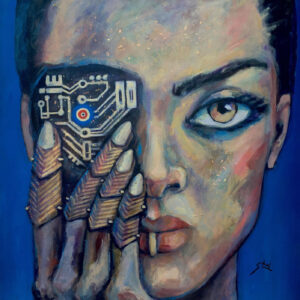
Wait for her and do not rush.
If she arrives late, wait for her.
If she arrives early, wait for her.—Lessons from the Kama Sutra, Mahmoud Darwish
Fadi Kattan
When I think of desire in the kitchen, I think of that tingling sensation when one develops a recipe and waits…waits for it to translate from an idea into the actual preparation…then the cooking moment. Then the plating. And after that, the first time you taste it. And the first time you serve it and wait for the first guests to taste it.
Nothing more than that stanza from Mahmoud Darwish’s poem put into music by the fabulous Trio Joubran captures those instants of wait. And yet he talks about a man waiting for a woman, not a cook in a dark kitchen waiting for a dish.
All through the ages, chefs were perceived as a bit of a strange persona, huddled up in a dark kitchen, often in noble or royal mansions, in the basement. They would conjure a sort of mystical unholy magic to create dishes served in great pomp at the hosts table.
The desire to first excel and then the desire to share the pleasure of the flavors with the guests and the world at large is an instant that fills the chef with such anxiety that often they go mad. That this instant pushes them over the edge and a frenzy of feelings and thoughts rush through the chef’s mind and nervous system in this instant where the culmination of the courtship of the dish and the deep desire to please.
Despite their airs of big bullies and insensitive beasts, chefs are a funny breed, mixing a lot of this authoritarian quasi rigid command in a kitchen and within themselves being I believe the most sensitive and fragile beings.
The Arts of the table being close to the Kama Sutra, although with different relations, protagonists and elements, the rhythm and the wait, the build-up and the tension, the meeting of flavors, textures and soul into a dish, the reveal of the final dish and then the pleasure, the chefs become the creators and at the same time the naked souls waiting for the pleasure of sharing with others an illumination.
Desire is an expression of many states and contexts and yet in the kitchen, they morph into one, the desire of a mother to share nourishment with her child, the desire of a lover to seduce, the desire of a patriarch to ensure the perpetuation of a craft, the desire of a child to have fun and the desire of longing to recreate a taste from nostalgia with the intense desire to create for the future an enlightened idea, all wrapped up into a small vessel, a dish, a plate, a bowl that contains all those desires.
And the desire for Beauty! Which chef does not try to arrange, prepare, dress their plate in its finest? Which chef does not agonize before a rendez-vous about the choice of the outer layer of their dish, about the finest details of the vestment and the most precise detail of the garnish? Which chef does not, in a moment of folly, senses that their dish does not look good enough for that rendez-vous and in that instant, let their primal cravings run wild in deconstructing the dish, splashing the sauce in a fit worthy of a desire struck creator?































